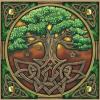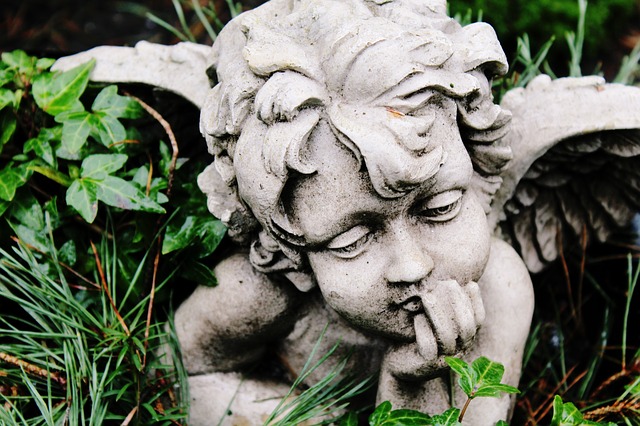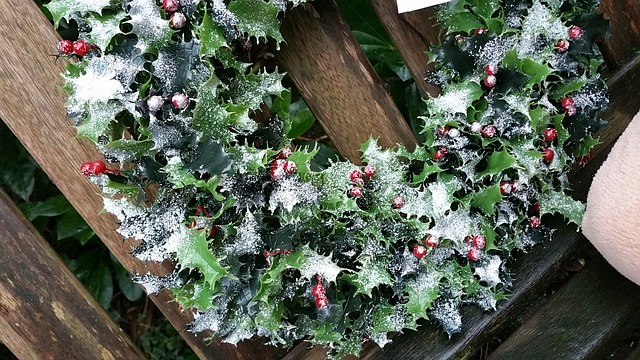 Submitted by Gideon Aedrini on
Submitted by Gideon Aedrini on

pixabay.com
Holly, Ivy and other greenery such as Mistletoe were originally used in pre-Christian times to help celebrate the Winter Solstice Festival and ward off evil spirits and to celebrate new growth.
When Christianity came into Western Europe, some people wanted to keep the greenery, to give it Christian meanings but also to ban the use of it to decorate homes. The UK and Germany were the main countries to keep the use of the greenery as decorations. Here are the Christian meanings:
Holly
The prickly leaves represent the crown of thorns that Jesus wore when he was crucified. The berries are the drops of blood that were shed by Jesus because of the thorns.
In Scandinavia it is known as the Christ Thorn.
In pagan times, Holly was thought to be a male plant and Ivy a female plant. An old tradition from the Midlands of England says that whatever one was brought into the house first over winter, tells you whether the man or woman of the house would rule that year! But it was unlucky to bring either into a house before Christmas Eve.
According to http://www.whats-your-sign.com :
The Celtic meaning of holly deals with ruling the wintery realms with style, dignity and honor even in the midst of great challenge.
Just as the oak tree is the king of the green realm and ruler of the lighter half of the year (the solar months when the sun is closer to the earth and sheds more light on the days), the holly is its counterpart.
Holly is the ruler of the white realm, king of the darker half of the year (the lunar months when the night pervades, and the annual era in which winter resides).
When all other flora have long lost their blush and gone dormant for the winter, the holly can be found still be brightly verdant against the stark white landscape. This serves as a symbolic reminder of many beatitudes:
Symbolic Messages from the Holly
- Let your beauty shine within even in times of dormancy
- Rule the day, and let your generosity be your legacy
- The energy of life is ever-present
The ancient Celts would bring holly into their homes for their bright, cheerful disposition. They were also considered a symbol of good luck.
Just as the oak attracts lightning, holly repels lightning. It was often planted around homes for protection from lightning, and for this reason it is viewed as a symbol for protection.
Interestingly, science has actually discovered the distinct leaf-shape of the holly acts as a natural repellent for lightning energy, making the holly's protective significance more than just lore.
Holly leaves are very prickly, and deemed another metaphor for protection, vigilance, and stubborn victories won. When you are feeling the walls cave in on you, call upon the holly. Invoke its protective qualities and you will soon find you no longer need be on the defensive. The holly will protect and bolster you to victory.
As the ruler of winter, the holly is also associated with dreams and the subconscious. Druids would often invoke the holly energy for assistance in dream work as well as spiritual journeying.

pixabay.com
Ivy
Ivy has to cling to something to support itself as it grows. This reminds us that we need to cling to God for support in our lives.
In Germany, it is traditional that Ivy is only used outside and a piece tied to the outside of a Church was supposed to protect it from lightning!
Laurel
Laurel has been worn as a wreath on the head to symbolise success and victory for thousands of years. It symbolises the victory of God over the Devil.
Fir & Yew Trees
Fir and Yew trees are evergreen and so signify everlasting life with God.
Fir is also very commonly used for Chritsmas Trees. The evergreen fir tree has traditionally been used to celebrate winter festivals (pagan and Christian) for thousands of years. Pagans used branches of it to decorate their homes during the winter solstice, as it made them think of the spring to come. The Romans used Fir Trees to decorate their temples at the festival of Saturnalia. Christians use it as a sign of everlasting life with God.
Other early Christmas Trees, across many parts of northern Europe, were cherry or hawthorn plants (or a branch of the plant) that were put into pots and brought inside so they would hopefully flower at Christmas time. If you couldn't afford a real plant, people made pyramids of woods and they were decorated to look like a tree with paper, apples and candles. Sometimes they were carried around from house to house, rather than being displayed in a home.
Rosemary
Rosemary was connected with the Virgin Mary (because it was thought to be Mary's favorite plant) and people thought that it could protect you from evil spirits. It is also sometimes called the friendship plant and it was the most common garnish put on the boar's head that rich people ate at the main Christmas meal in the Middle ages!
It is also known as the remembrance herb and was used at Christmas as this is the time that we remember the birth of Jesus.
In the late 1700s a special Christmas Rosemary Service was started in Ripon Cathedral School where a red apple, with a sprig of Rosemary in the top of it, was sold by the school boys to the members of the congregation for 2p, 4p or 6p (depending on the size of apple!).
Christmas Wreaths
Hanging a circular wreath of evergreens during mid winter seems to go back a very long way. It might have started back in Roman times when wreaths were hung on their doors as a sign of victory and of their status. Rich Roman women also wore them as headdresses at special occasions like weddings and to show they were posh. Roman Emperors also wore Laurel Wreaths. They were also given to the winners of events in the original Olympic Games in Greece.
The word 'wreath' comes from the Old English word 'writhen' which means to writhe or twist. Christmas Wreaths as we know them today, might have started life as Kissing Boughs (see below) or come from the German and Easter European custom of Advent Wreaths.
Kissing Boughs or Kissing Bunches
In the UK, before Christmas Trees became popular and dating back to the middle ages, another popular form of Christmas/mid winter decoration was the Kissing Bough or Bunch. These were made of five wooden hoops that made the shape of a ball (four hoops vertical to form the ball and then the fifth horizontal to go around the middle). The hoops were covered with Holly, Ivy, Rosemary, Bay, Fir or other evergreen plants. Inside the hoops were hung red apples (often hung from red ribbons) and a candle was either put inside the ball at the bottom or round the horizontal hoop. The bough was finished by hanging a large bunch of mistletoe from the bottom of the ball. (For a simpler bough you could also just have a horizontal hoop decorated and hung with apples and the mistletoe.)
Main resource: http://www.whychristmas.com/customs/hollyandivy.shtml
- 665 reads